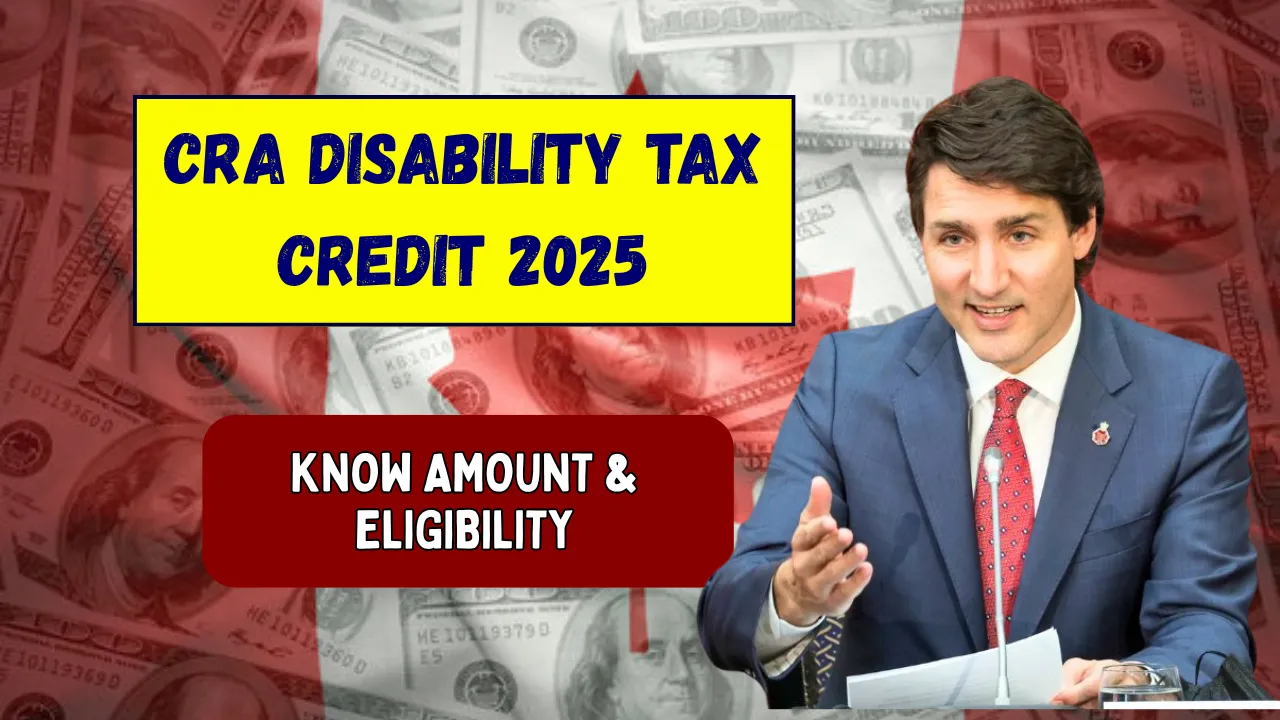CRA Disability Tax Credit 2025: The CRA Disability Tax Credit 2025 plays a vital role in easing the financial burden for Canadians living with physical or mental disabilities. It is a non-refundable tax credit offered by the Canada Revenue Agency (CRA), designed to reduce the amount of income tax payable, helping individuals and their supporting families manage the additional costs that come with long-term disabilities.
This tax credit not only supports the disabled individual but also extends financial relief to caregivers and family members who provide necessary assistance. In this article, we’ll explore who qualifies, how much they can claim, and the proper way to apply for this benefit on your tax return.
CRA Disability Tax Credit 2025
The CRA Disability Tax Credit 2025 is structured to support individuals with serious and prolonged physical or mental impairments. It helps reduce taxable income for both the disabled individual and their caregivers. Being a non-refundable credit, it does not result in a cash refund but lowers the amount of taxes owed.
To qualify, a licensed medical practitioner must certify the severity and duration of the disability. The credit can be claimed only after tax filing, and the benefit applies to both adults and children under specific conditions.
Overview Table: CRA Disability Tax Credit 2025 Details
| Program Name | CRA Disability Tax Credit 2025 |
| Administering Body | Canada Revenue Agency (CRA) |
| Type of Credit | Non-refundable |
| Eligibility | Canadians with certified long-term disabilities or supporting them |
| Purpose | Reduce taxable income for individuals with disabilities |
| Base Disability Credit | $9,872 |
| Child Supplement (Under 18) | $5,758 |
| Total for Eligible Children | Up to $15,630 |
| Claim Frequency | Annual (through tax filing) |
| Application Requirement | Medical certification and tax filing |
| Official Website | www.canada.ca |
Canada Disability Tax Credit Payment Eligibility 2025
To be eligible for the CRA Disability Tax Credit 2025, a person must have a severe and long-lasting impairment that affects their daily life. These conditions can be physical or mental and must be verified by a qualified medical professional.
Common qualifying categories include:
- Vision impairment
- Difficulty walking or speaking
- Mental or psychological conditions
- Hearing loss
- Issues with dressing, feeding, or eliminating
- Need for life-sustaining therapy
If an individual doesn’t qualify under one category alone, a combination of impairments may also make them eligible. Additionally, caregivers and supporting family members can claim the credit if the disabled individual doesn’t need the full amount to reduce their taxes.
Know CRA Disability Tax Credit Amount 2025
For the 2025 tax year, the Disability Tax Credit includes two parts:
- Base Disability Amount: $9,872
- Supplement for Children Under 18: $5,758
So, if a child under 18 qualifies, the total credit available can go up to $15,630. These amounts are indexed and may be updated yearly based on inflation.
Keep in mind, since this is a non-cash benefit, the amounts reduce the income tax owed but do not result in a direct payment or refund if your tax owing is already zero.
How To Claim DTC on 2024 Tax Return
Claiming the CRA Disability Tax Credit 2025 involves a few key steps:
- Certification: Get Form T2201 filled out and certified by a medical practitioner.
- Filing: When submitting your 2024 tax return, include the certified form or ensure CRA has it on file.
- Choose the right tax line:
- If the disabled person is claiming: use Line 31600
- If a supporting family member is claiming: use Line 31800
- If the spouse/partner is claiming: use Line 32600
- If the disabled person is claiming: use Line 31600
- Medical Expense Deduction: If your doctor charged a fee for completing the form, claim it as a medical expense under Line 33099 or 33199.
Unused portions of the credit can be transferred to a supporting family member, ensuring the benefit is not lost if the individual has little or no taxable income.
Who Can Get Disability Tax Credit 2025?
Anyone certified by a healthcare provider as having a long-term and serious impairment may qualify for the credit. This includes people with mental, cognitive, and physical disabilities that impact daily living activities. The benefit is open to both adults and children.
If the disabled person is a child, the family may also claim an additional supplement to the base credit. Caregivers and family members who support the individual can apply the credit to their tax returns if the disabled person is not using it.
Can DTC Amount Be Transferred to Others?
Yes, if the full credit is not needed by the person with the disability, the remaining amount can be transferred to a caregiver or a supporting family member. This makes the credit more flexible and ensures the tax relief still supports the household financially.
The transfer can only be made if the individual is dependent on the family member for care and support.
Do Children Qualify for Disability Tax Credit?
Yes, children with disabilities also qualify for the DTC. In addition to the base credit, an extra $5,758 is available as a child supplement, making the total amount for eligible children up to $15,630.
As with adults, a medical certification is required to verify eligibility. The supplement helps families deal with additional expenses that often come with childhood disabilities, such as therapy, adaptive equipment, or specialized schooling.
How Do the Residents Verify the Canada DTC 2025?
You can verify your CRA Disability Tax Credit 2025 eligibility and status through the official CRA website at www.canada.ca. If you’re unsure or need help, you can also contact CRA customer service directly via their helpline.
Checking your CRA account regularly ensures that your records are up to date and your tax credit is applied properly.
Final Thought
The CRA Disability Tax Credit 2025 is a key support tool for Canadians facing the challenges of living with a long-term disability. Whether you’re an individual living with a disability or a family member caring for someone who is, this credit can provide substantial relief by lowering your tax burden. With proper medical certification and awareness of the claiming process, you can make full use of this important benefit.
Make sure to review your eligibility, gather the right documents, and submit your claim with your 2024 tax return. If you have any doubts, consult a tax professional or reach out to CRA for guidance. Share this information with anyone you know who might benefit from it.










